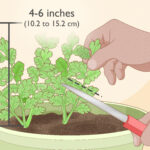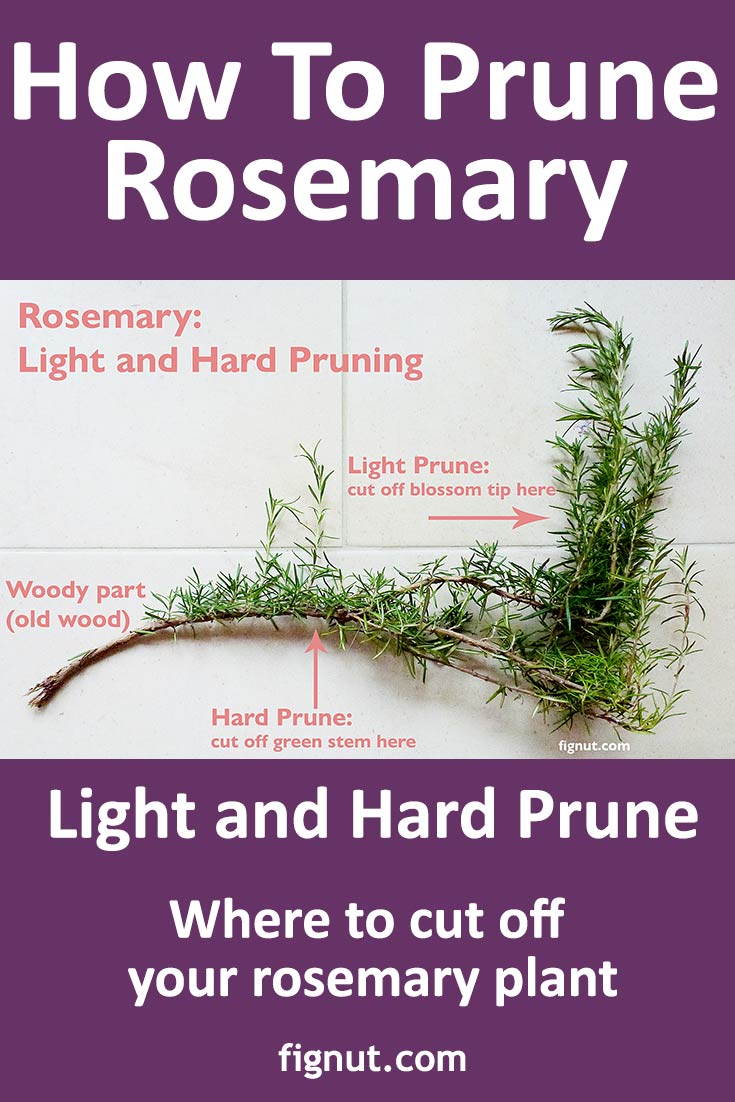Pruning rosemary is more than just a gardening chore; it’s a vital practice to ensure the longevity and vitality of your beloved herb. With its aromatic leaves and sturdy nature, rosemary is a favorite among gardeners and chefs alike. However, without proper pruning, rosemary can become leggy and woody, losing its lush, bushy form and culinary appeal.
Why should you prune rosemary?
Pruning rosemary is essential for maintaining a healthy and vigorous plant. Regular pruning encourages new growth, helps to shape the plant, and can prevent diseases by improving airflow around the foliage. It also prevents the herb from becoming too woody, which can affect the quality and flavor of the leaves.
Rosemary, left unpruned, can become sparse and overgrown. Pruning stimulates the plant to produce fresh, fragrant leaves that are ideal for cooking. Moreover, it’s a great opportunity to harvest and dry sprigs for culinary use throughout the year.
Pruning also plays a role in the aesthetic appeal of your garden. A neatly trimmed rosemary plant adds structure and beauty to your landscape, enhancing the overall look of your herb garden.
When is the best time to prune rosemary?
The optimal time for pruning rosemary is in the spring or early summer. After the plant has flowered, it is the perfect moment to cut back the spent blooms and shape the plant. This timing allows the rosemary to recover and grow back stronger before the winter months.
In milder climates, rosemary can be pruned lightly throughout the year to maintain its shape and encourage growth. However, avoid heavy pruning in late fall or winter, as this can leave the plant vulnerable to frost damage.
If you live in an area with harsh winters, you’ll want to complete your pruning tasks by early fall to give the plant enough time to establish new growth before the cold sets in.
How to prune young rosemary plants?
Young rosemary plants require a gentle touch when it comes to pruning. Start by removing any dead or damaged stems to promote healthy growth. Use sharp, clean shears to make clean cuts, which will help prevent infection and encourage faster healing.
Shape the plant by cutting back the tips of the stems, encouraging the rosemary to grow more densely and become bushier. Aim to prune no more than one-third of the plant’s overall size to avoid stressing the young herb.

Always cut just above a leaf node, as this is where new growth will emerge. By pruning young rosemary plants correctly, you can set them up for a future of robust health and abundant production.
How to prune older rosemary plants?
Older rosemary plants can become quite woody and may require more aggressive pruning to rejuvenate them. Start by removing any wood that is dead or no longer producing leaves. If the plant is very overgrown, you may need to prune it back over a couple of seasons gradually.
 Swiss cheese plant care and growing tips: expert advice
Swiss cheese plant care and growing tips: expert adviceWhen cutting back an older rosemary plant, make sure to leave enough green growth so the plant can continue to photosynthesize and recover. It’s also important to prune evenly around the plant to maintain its natural shape.
To avoid shocking the plant, perform heavy pruning in the early spring, so the rosemary has the entire growing season to recover and fill out. Be patient, as it may take some time for an older plant to regain its full lushness after a hard prune.
What common mistakes should you avoid when pruning rosemary?
One common mistake is pruning at the wrong time of year, which can leave rosemary vulnerable to frost or heat stress. Another error is cutting into the woody part of the plant that has no leaves, as this can hinder new growth.
Over-pruning is another pitfall—removing too much of the plant at once can shock the plant and stunt its growth. Always remember the rule of thumb: never prune more than one-third of the plant at a time.
Lastly, using dull or dirty pruning tools can damage the stems and introduce disease. Keep your shears sharp and clean for a healthy pruning experience.
How to trim rosemary for cooking?
When you trim rosemary for cooking, you’re not only harvesting delicious herbs for your dishes but also helping the plant. Use sharp scissors or shears to snip sprigs from the top of the plant. This selective trimming can help maintain the plant’s shape and encourage new growth.

Only take what you need for cooking, and try to cut just above a leaf node to stimulate the plant to produce more foliage. If you need a larger quantity, this is a perfect opportunity to do a more thorough prune and shape the plant.
Remember, fresh rosemary is much more potent than dried, so adjust your recipes accordingly. The sprigs can also be dried or frozen for later use, ensuring you have a supply of rosemary year-round.
How to propagate new rosemary plants from cuttings?
Pruning offers a great opportunity to propagate new rosemary plants from cuttings. Select healthy, non-woody stems and cut a piece about 4-6 inches long. Remove the lower leaves and dip the cut end into rooting hormone powder.
Next, plant the cuttings in a well-draining soil mix and water them regularly, keeping the soil moist but not waterlogged. Place the cuttings in a warm, bright area but out of direct sunlight until roots have established.
Once the cuttings have rooted and show new growth, they can be transplanted into individual pots or into the garden. With patience and care, you can expand your rosemary collection and even share plants with friends and family.
 How to grow cilantro: tips on sowing, growing and harvesting
How to grow cilantro: tips on sowing, growing and harvestingRelated questions on pruning and caring for rosemary
When should rosemary be pruned?
Rosemary should primarily be pruned in the spring or early summer, after it has flowered. This timing allows the plant to recover before winter. In warmer climates, light pruning can be done year-round.
Regular maintenance pruning helps keep the plant healthy and prevents it from becoming too leggy or woody. It’s also the perfect time to harvest sprigs for culinary use.
How do you trim rosemary so it keeps growing?
To trim rosemary and encourage continuous growth, make cuts just above leaf nodes. This technique prompts the plant to produce new stems. Prune sparingly and regularly, rather than doing a heavy prune all at once.

Maintain the natural shape of the plant by evenly trimming around the entire bush. This balanced approach helps the rosemary to grow uniformly and remain attractive.
How do you harvest rosemary so it keeps growing?
Harvest rosemary by snipping sprigs from the plant’s top, which encourages new growth from below. Focus on harvesting the younger, green stems, as these are the most flavorful and tender for cooking.
Remember to make clean cuts with sharp shears and avoid taking too much from one section. Harvesting can be part of your regular pruning routine, ensuring the plant stays productive and healthy.
Will rosemary grow back after cutting back?
Yes, rosemary will grow back after being cut back, provided it’s done correctly. Prune no more than one-third of the plant at a time and avoid cutting into the thick, woody stems that don’t have leaves.
After pruning, make sure the plant gets enough water and sunlight to recover and generate new growth. With proper care, your rosemary should bounce back and continue to thrive.
To illustrate pruning techniques, let’s look at a helpful video. Here is a guide to pruning rosemary properly:
Remember to integrate key phrases like how to prune rosemary for optimal growth, best practices for pruning rosemary plants, and tips for maintaining a healthy rosemary bush throughout the article to ensure a comprehensive coverage of the topic. With these simple tips for healthy herbs, gardeners can enjoy their rosemary plants’ robust flavor and ornamental beauty for years to come.
 Christmas cactus propagation: get more festive plants for free tips and tricks
Christmas cactus propagation: get more festive plants for free tips and tricks
